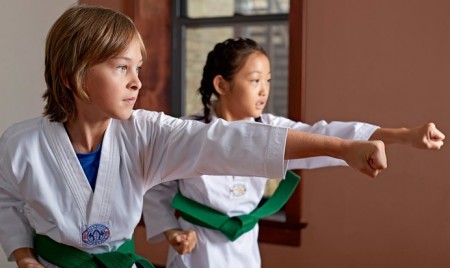UFK Martial Arts: $25 for One-Month Martial-Arts Membership for One Child ($179 Value)
Today’s Groupon Vancouver Daily Deal of the Day: UFK Martial Arts: $25 for One-Month Martial-Arts Membership for One Child ($179 Value)
Buy now for only $
25
Value $179
Discount 86% Off
Save $154
The Groupon Deal
- C$25 for a one-month martial-arts membership for one child (C$179 value)
- Click to see the class schedule.
This is a limited time offer while quantities last so don’t miss out!
Click here to buy now or for more details about the deal.
In a Nutshell
A great alternative to daycare, this martial-arts facility focuses on instruction, fitness, and promoting a healthy lifestyle
The Fine Print
Expires 90 days after purchase. May be repurchased every 120 days. Must sign waiver. Limit 1 per person, may buy 1 additional as gift. Valid only for option purchased. Reservation required; subject to availability. Merchant is solely responsible to purchasers for the care and quality of the advertised goods and services.
UFK Martial Arts
http://www.ufkkids.com/
911 Denman St.
Unit 206
Vancouver, BC V5K 0A1
+16046138803
Gi: The Duds of Discipline
People often joke that the robes worn by martial-arts practitioners resemble pajamas, but that may not be such a far cry. Read on to learn more about this ancient garb.
Though its proper name might not spring to mind, the customary outfit of a dojo sensei, commonly known as a gi, is eminently recognizable: a jacket called an uwagi tied by a belt (or obi) over a pair of short pants (shitakabi), the whole ensemble draped loosely to allow for swift and acrobatic movements. The particular materials used to make the gi follow the needs of specific martial-arts styles. A karate master who relies on quick strikes and powerful blows, for example, will likely don a lighter gi, whereas a judo fighter might enlist heavier, more durable fabric to endure the endless grapples and throws. In Japan, the catchall term for the customary robe isn’t gi but rather keikogi—keiko translates to “practice.” The name might also take on a prefix according to its intended discipline: judogi, karategi, aikidogi, and so forth.
Despite being a symbol of martial-arts culture for centuries, the gi’s origin remains unclear. Some speculate that the airy uniform was simply designed to accommodate the lifestyle of the Okinawan farmers and fishermen who invented it. Others contend that, in light of a 13th-century imperial ban on the possession of weapons, warriors trained at night to avoid detection. In a pinch, the robes could pass for sleepwear, concealing their transgression.
Click here to buy now or for more information about the deal. Don’t miss out!

